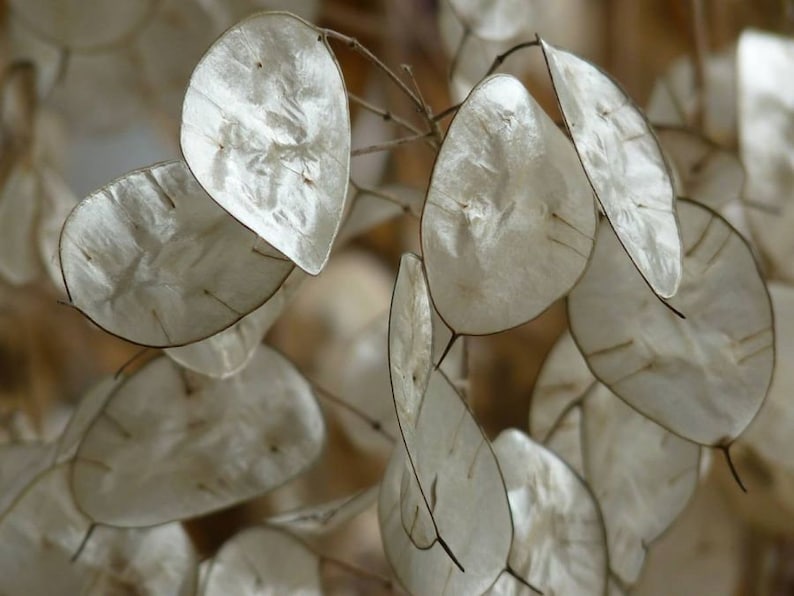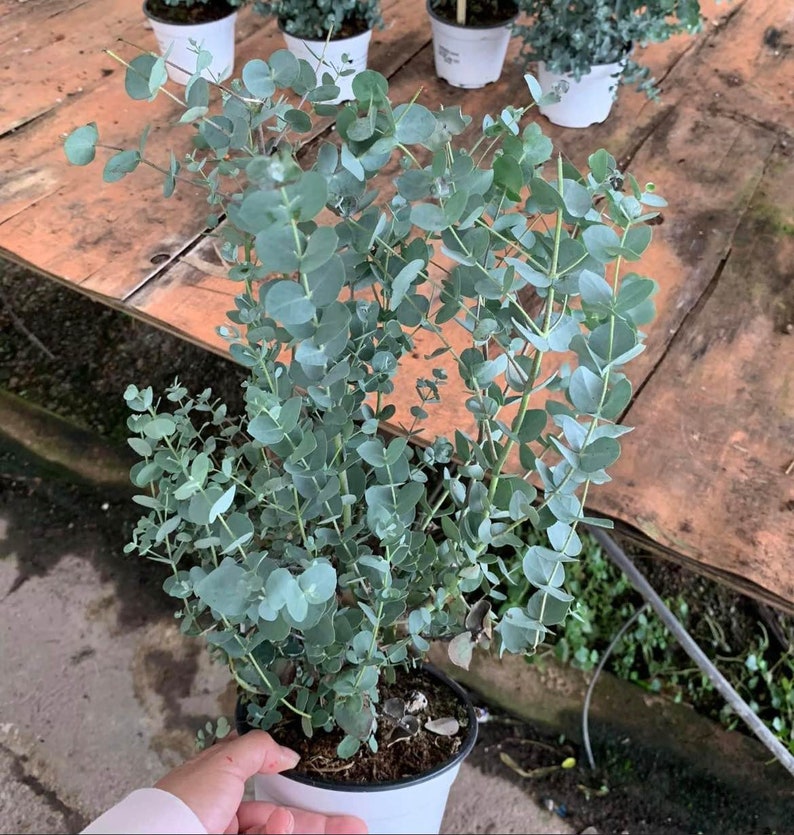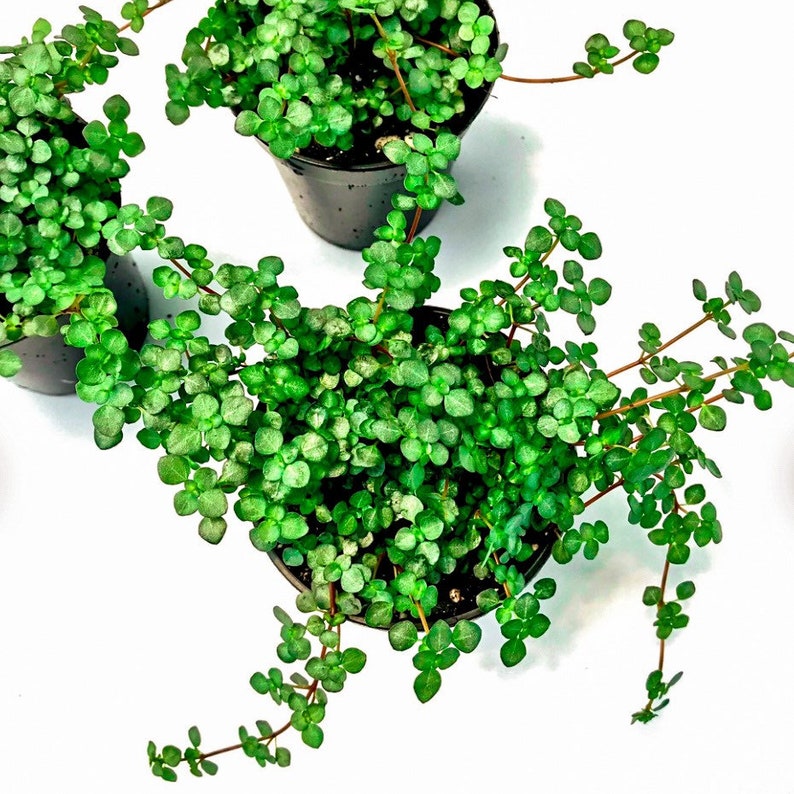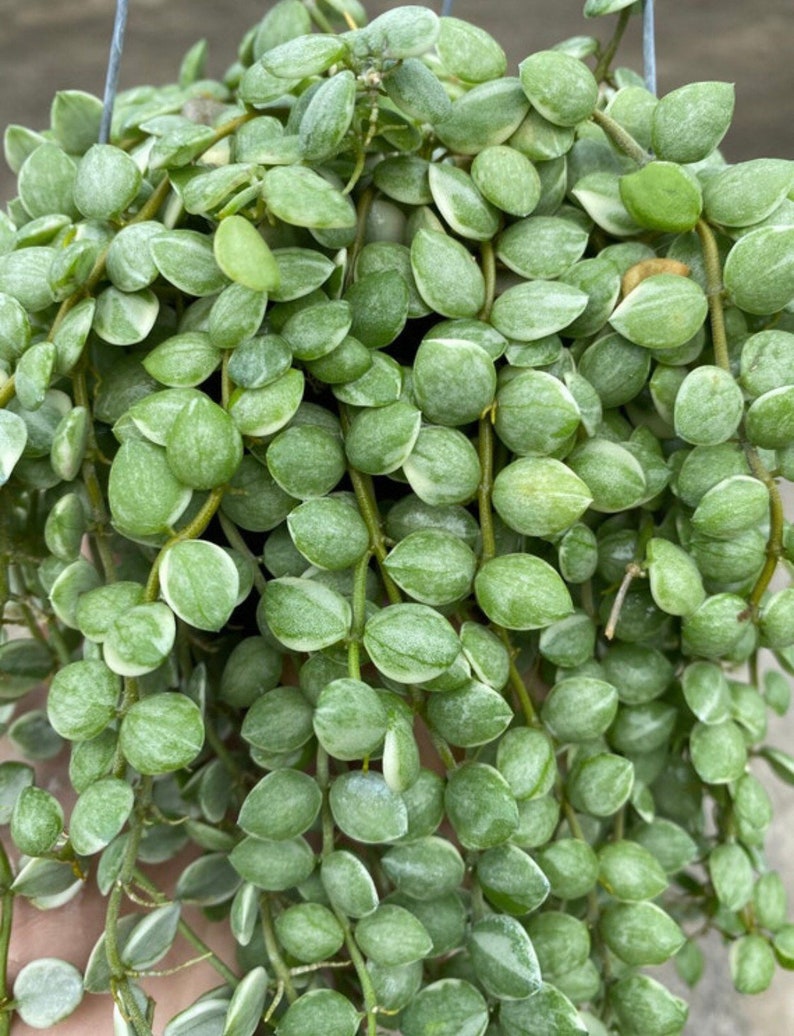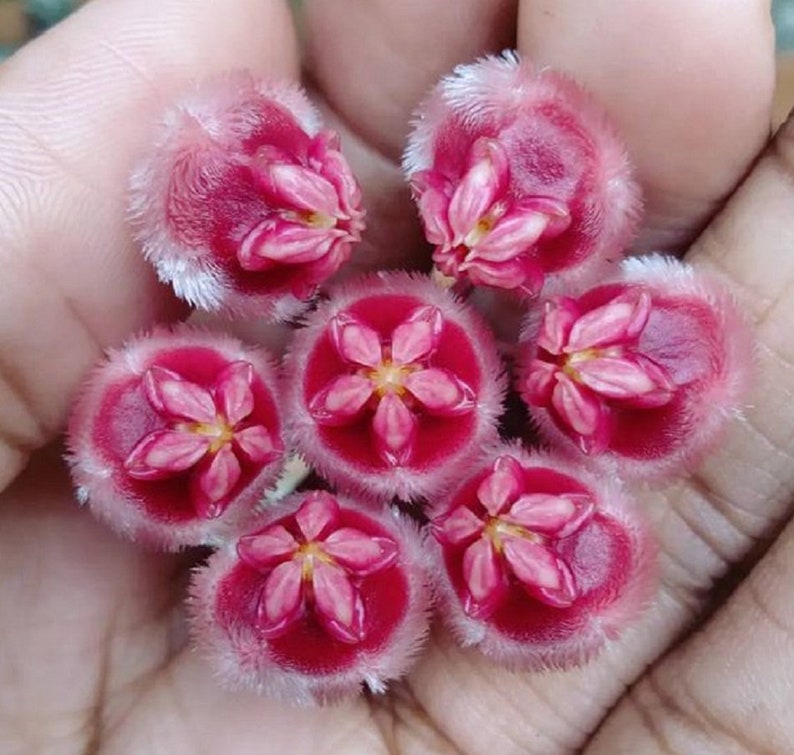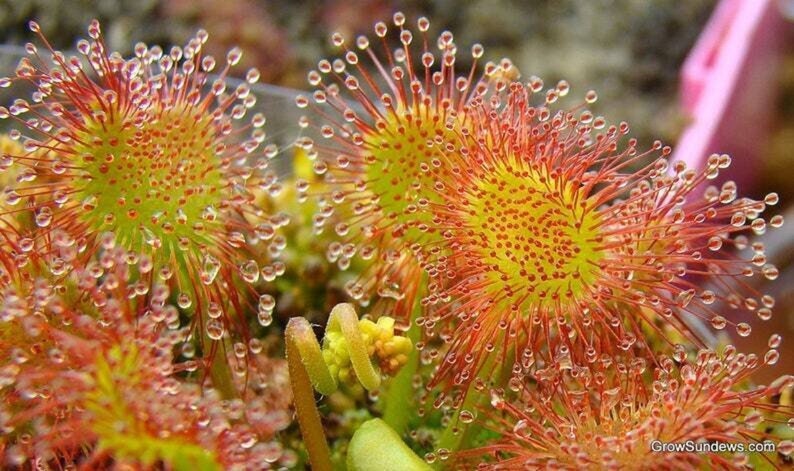Round leaves can be very attractive on a plant, and many indoor plants have become popular thanks to their small, coin-shaped leaves.
Trailing or climbing vines are also particularly appreciated for their cascading effect.
There is something for every taste as some of the species we will see are succulents or semi-succulents with shiny, fleshy foliage, while others have fragrant leaves or flowers.
- Related article: Houseplant Background
In this article, we will look at ten of the most beautiful plants with round leaves, boasting their different leaf sizes and colors!
1. Water Lily (Nymphaeaceae Family)
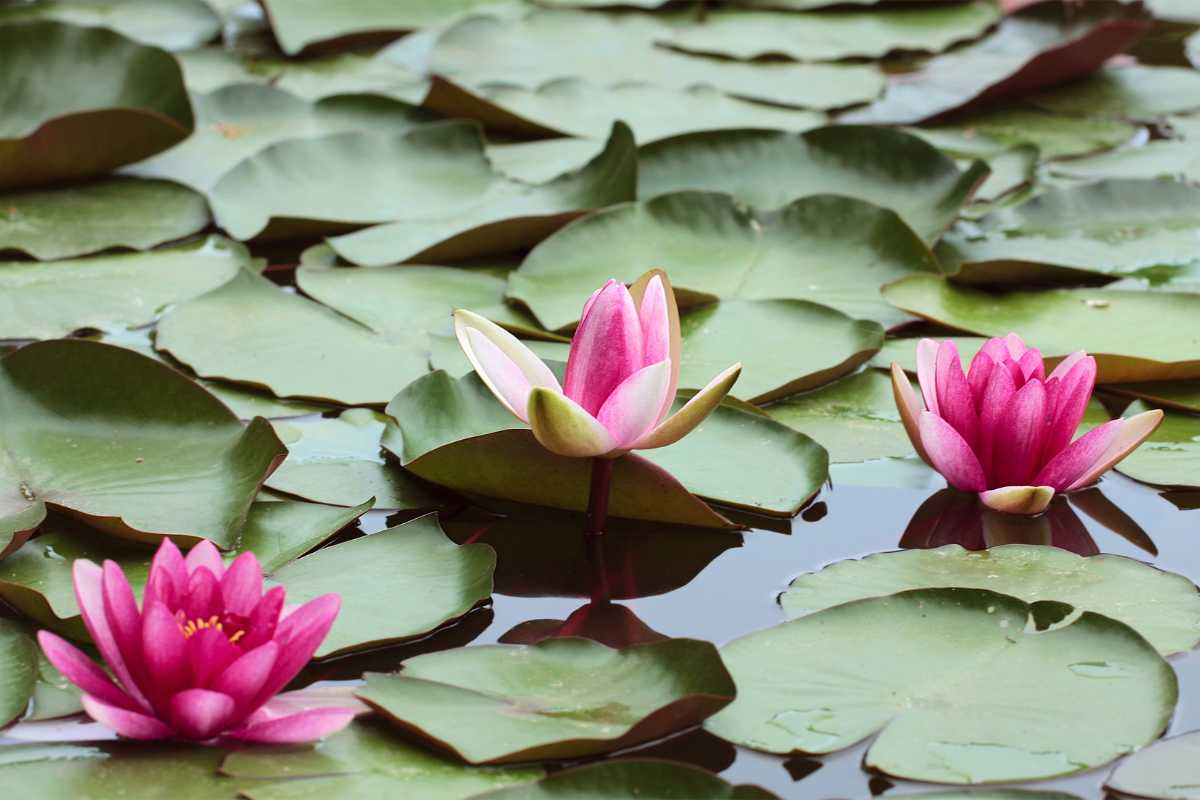
Water Lilies are aquatic flowering plants that will never fail to attract attention with their large, round leaves and fragrant, solitary flowers.
Some of the almost 60 species of Water Lilies are tropical species, but others are native to temperate areas, and they all belong to four different genera of the Nymphaeaceae family.
The stems of Water Lilies are buried in the mud, underwater, while its leaves and flowers float on the water’s surface.
Water Lilies are also an important source of food for fish and other wildlife, not just a beautiful plant.
There is also a ide variety of cultivars that have been developed for ornamental use nowadays.
2. Chinese Money Plant (Pilea Peperomioides)

Considered good luck, the Chinese Money Plant (aka Pilea Peperomioides) from the Nettle family is native to Southern China where it grows outdoors.
In other parts of the world, it has become a very popular houseplant, thanks to its beautiful coin-shaped, shiny leaves and its ease of care.
The Chinese Money Plant doesn’t tolerate direct light as its leaves easily burn. If you want it to have a uniform shape, you should take care of rotating the plant periodically so every part of it gets exposed to the light.
This plant also thrives in rich and well-drained soil, which shouldn’t be kept too wet to avoid rotting the roots. When cultivated indoors, Chinese Money Plants usually don’t reach the flowering stage.
3. Garden Nasturtium (Tropaeolum Majus)
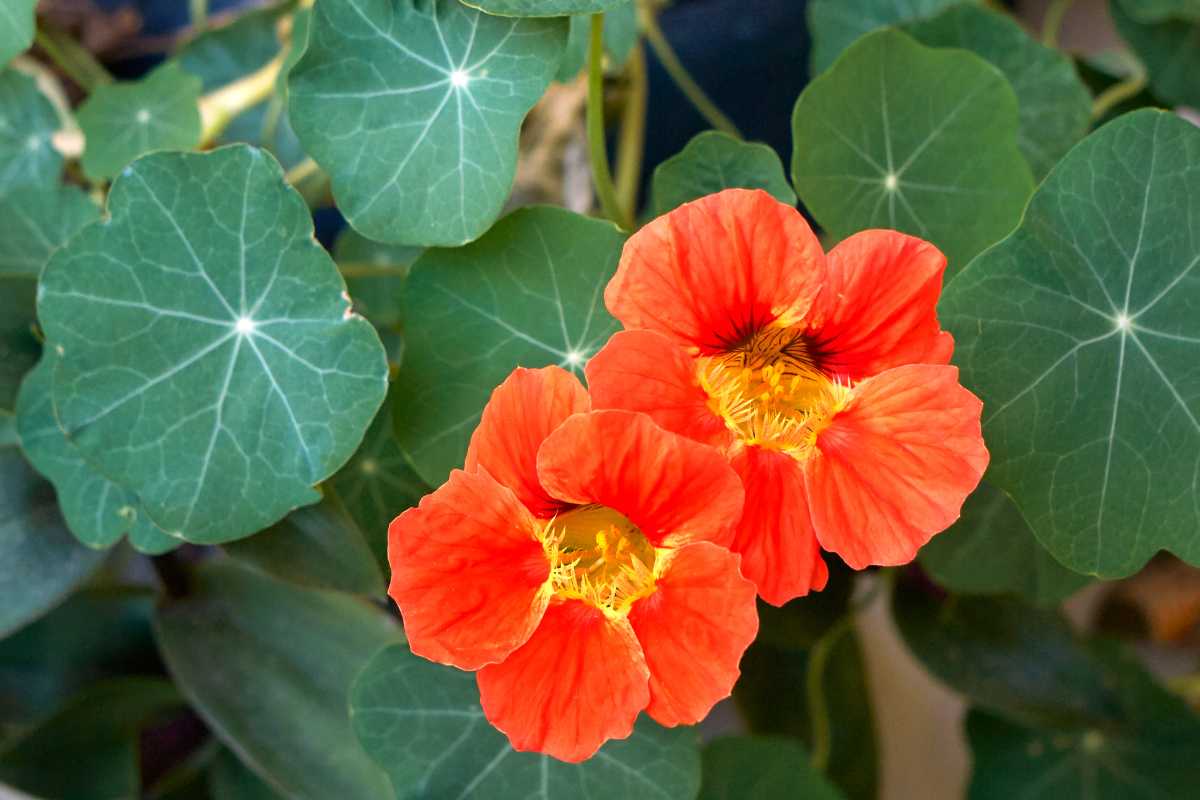
The Garden Nasturtium, also called Indian Cress or Monk’s Cress, is originally from the Andes in Bolivia and has round, green leaves with contrasting white veins.
Nasturtiums are great to grow in the garden as they attract aphids, serving as bait to keep your crops free of these pests.
Also, with their beautiful red or orange-colored flowers, these plants can brighten up any garden.
Nasturtiums can also be planted in pots, but the important thing is to provide fertile soil and regular water. These flowering plants thrive in warm and bright conditions.
4. Silver Dollar Plant (Lunaria Annua)
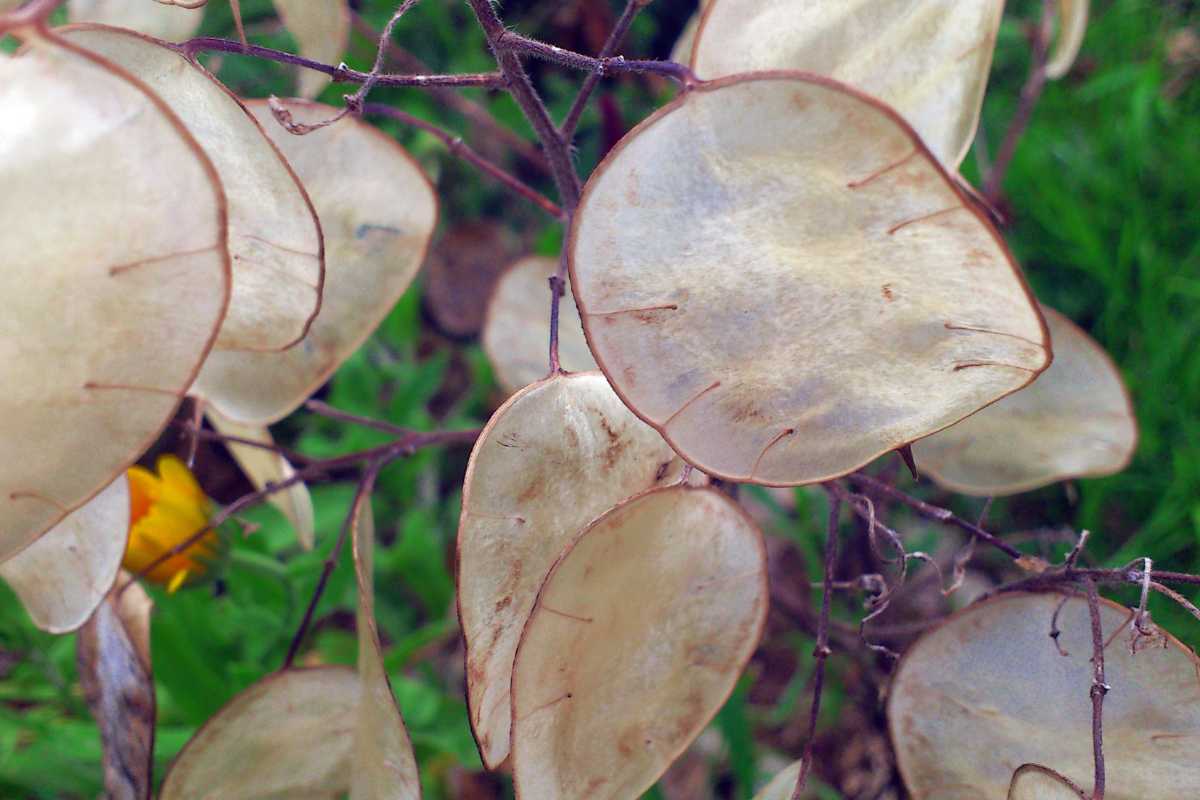
Lunaria annua is known as the Silver Dollar Plant and is closely related to Cabbages, being they are in the same family.
This plant is quite unusual with its round, white, and silver seed pods that stay on the plant throughout the winter.
Technically then, it’s not the foliage that is round, even if the seed pods can be easily mistaken for leaves. You can tell they aren’t because the dark seeds can be seen on the inside of the partly transparent pod.
The Silver Dollar Plant has small, purple flowers that appear in summer and have a very pleasant aroma.
Lunaria annua doesn’t need much care to thrive as it can grow in any type of soil and light levels. Also, it shouldn’t be watered abundantly.
5. October Daphne Stonecrop (Sedum Sieboldii)
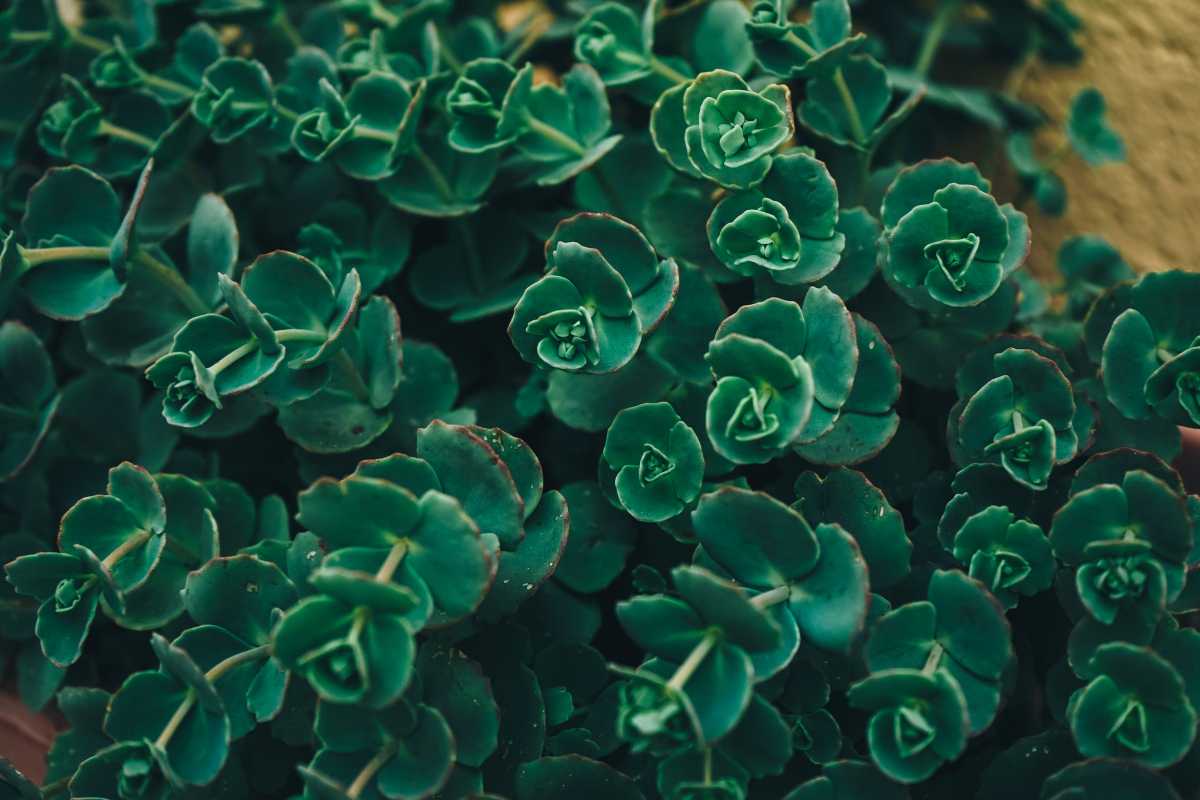
This succulent plant is native to Japan and is particularly attractive because of the nuanced colors of its foliage. The small, round leaves can be of many different shades of green and blue and are edged in pink.
The flowers of this plant are also quite striking when they appear in early fall with their bright pink colors.
October Daphne Stonecrop can be grown both outdoors and indoors. It spreads very quickly and can be used to form thick mats or be paired with other flowering plants.
Being a succulent, it should be watered sparingly and placed in well-draining soil. It can also grow both in full, direct sunlight and partial shade.
6. Cider Gum (Eucalyptus Gunnii)
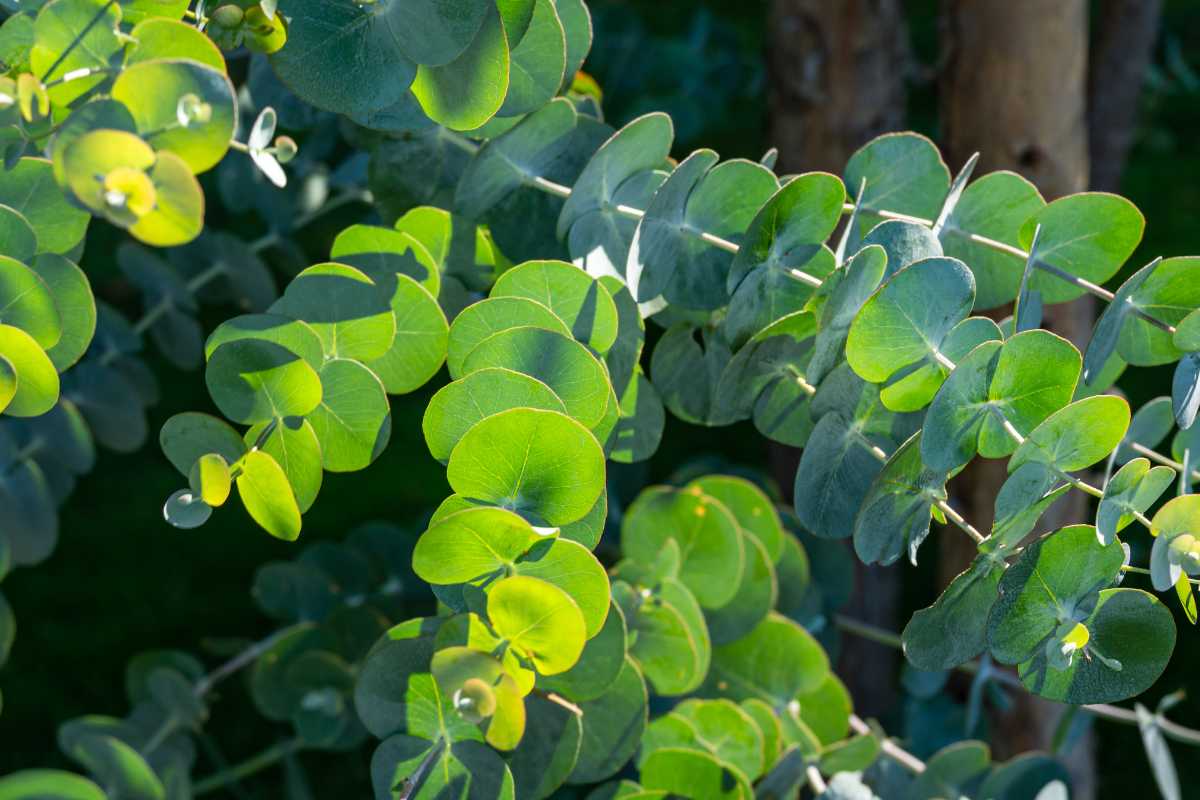
The Cider Gum, also known as Snow Gum, is a small, evergreen tree native to Tasmania. It has smooth bark that is white or grey in color.
Cider Gum belongs to the Eucalyptus genus together with about seven hundred other species, which can be trees, shrubs, or mallees.
The leaves of this particular Eucalyptus are notable because they are round or heart-shaped when young, with a silver-blue-green color.
They contain oil glands that release a very aromatic scent.
If you let this plant grow, the leaves will become lance-shaped like those of most other Eucalyptus species. If pruned hard once a year, these trees can be maintained small and with their juvenile leaves.
The Cider Gum is widely cultivated because of its exceptional resistance to cold compared to other trees of the same genus. It also tolerates droughts but needs plenty of sunlight.
7. String of Turtles (Peperomia Prostrata)

The String of Turtles is a vining plant native to the Brazilian rainforests. It’s a perennial semi-succulent plant of the Peperomia genus.
Its tiny, round leaves look like turtle shells. These fleshy leaves are purple-green in color and have white veins.
The String of Turtles grows slowly but lasts very long. It is quite easy to care for, provided the air in your home is not too dry.
This Peperomia thrives in indirect, bright sunlight, and moist soil. Take care of not overwatering it, or it could start losing its leaves.
This plant is a creeping or trailing plant and will look beautiful cascading down from containers or hanging baskets.
8. Silver Leaf Artillery Plant (Pilea Glauca /Pilea Glaucophylla /Pilea Libanensis)
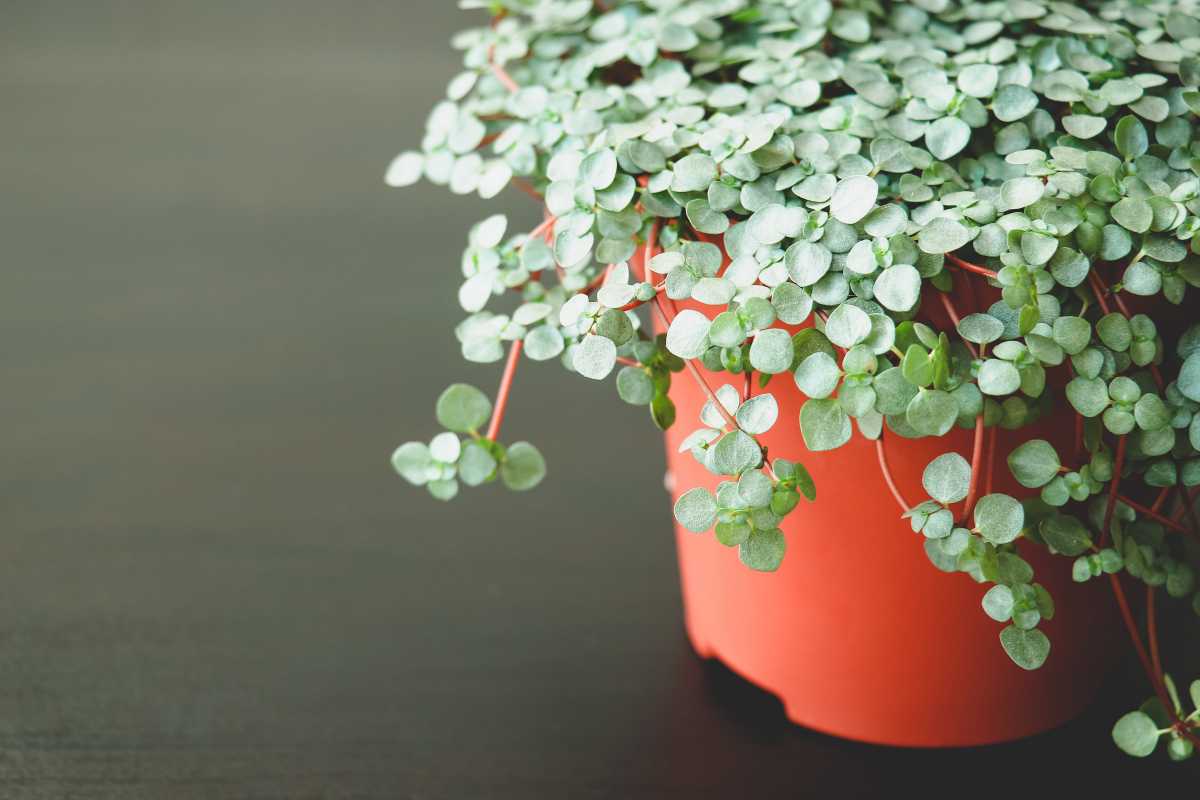
The Silver Leaf Artillery Plant, also known as Pilea Silver Sparkle, has become widely popular because of its tiny blue-grey leaves covered in a sparkly, silvery powder.
Being a new variety, its scientific name hasn’t been officialized yet and the plant is sometimes listed as Pilea glauca or Pilea glaucophylla, others as Pilea libanensis.
Pilea glauca has reddish succulent stems that can trail down from hanging pots or form a thick ground cover.
It’s quite easy to grow as it can be cultivated at average room temperatures and normal indoor levels of humidity.
It thrives in bright, indirect light and well-draining soil that should be maintained moist but not too wet.
9. String of Nickels (Dischidia Nummularia)
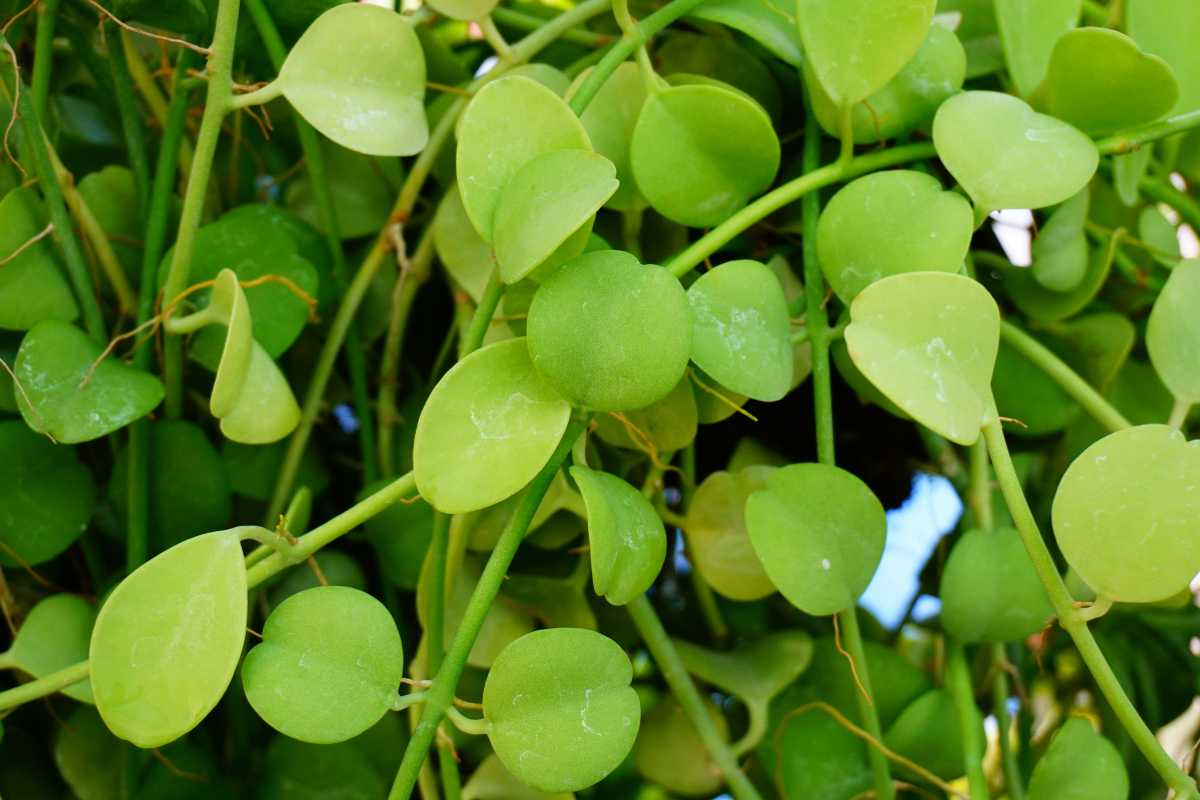
The string of Nickels are small succulents with tiny, round leaves that look like dangling coins.
In temperate climates, they are mostly grown as indoor plants since they can thrive in low-light conditions. However, these plants grow climbing on other plants as they are native to the tropics.
They can be moved outdoors but will need to be protected from constant sunlight and strong winds during the summer.
At home, the String of Nickels can be left trailing down over the edge of a basket or pot.
The small leaves of this plant that vary in color from shades of silver or bronze to light green is its most attractive feature.
On the other hand, its flowers are small and not particularly striking in appearance, making them easily overlooked.
10. Porcelain Flower Plant (Hoya Brevialata)
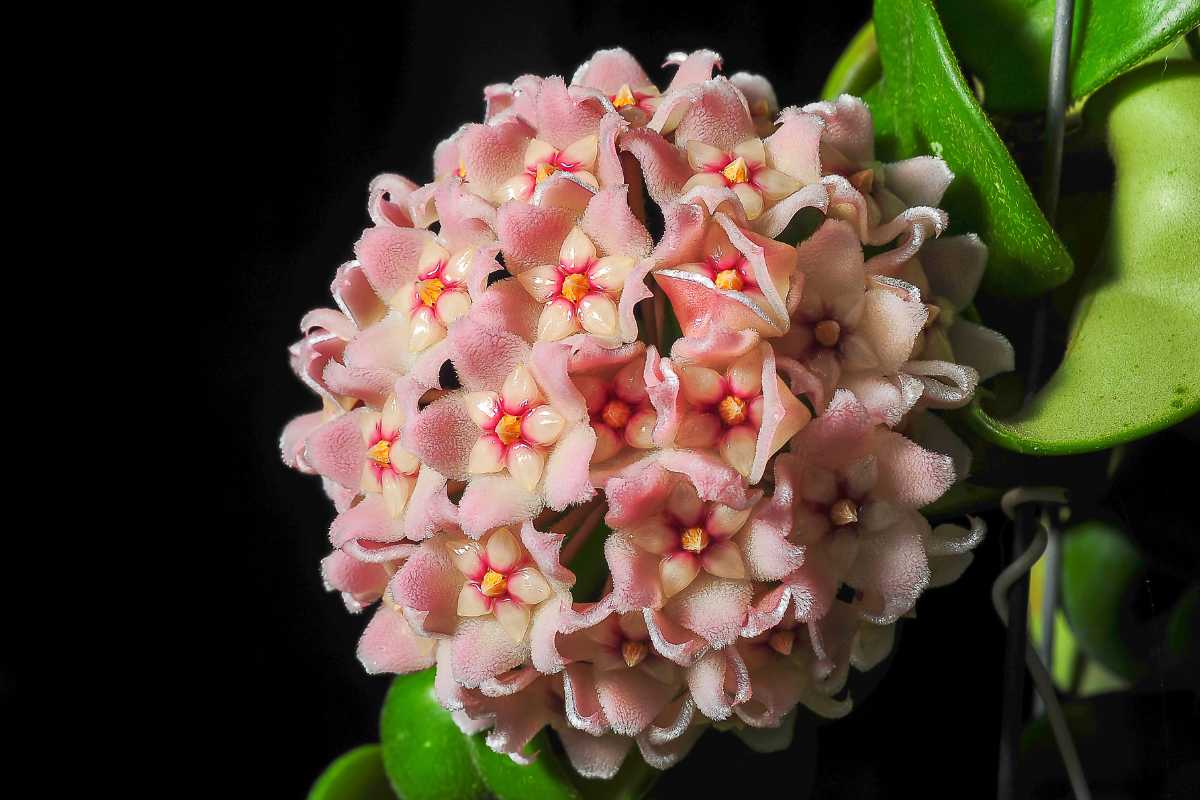
The Porcelain Flower Plant is a perennial plant with waxy, round leaves, plus red and white flowers with a caramel-like scent.
Its scientific name is Hoya brevialata and it is also known as the Wax Flower Plant. It’s a tender, tropical plant that, in nature, grows mostly in Southeast Asia, but also in Florida and Texas.
It’s particularly appreciated because it’s one of the smallest Hoyas and it is said to become more beautiful the more it ages.
In order to thrive indoors, it needs high humidity levels and a warm environment with bright, dappled light. The Porcelain Flower Plant should also be watered regularly but not excessively.
11. Round-Leaved Sundew Plant (Drosera Rotundifolia)
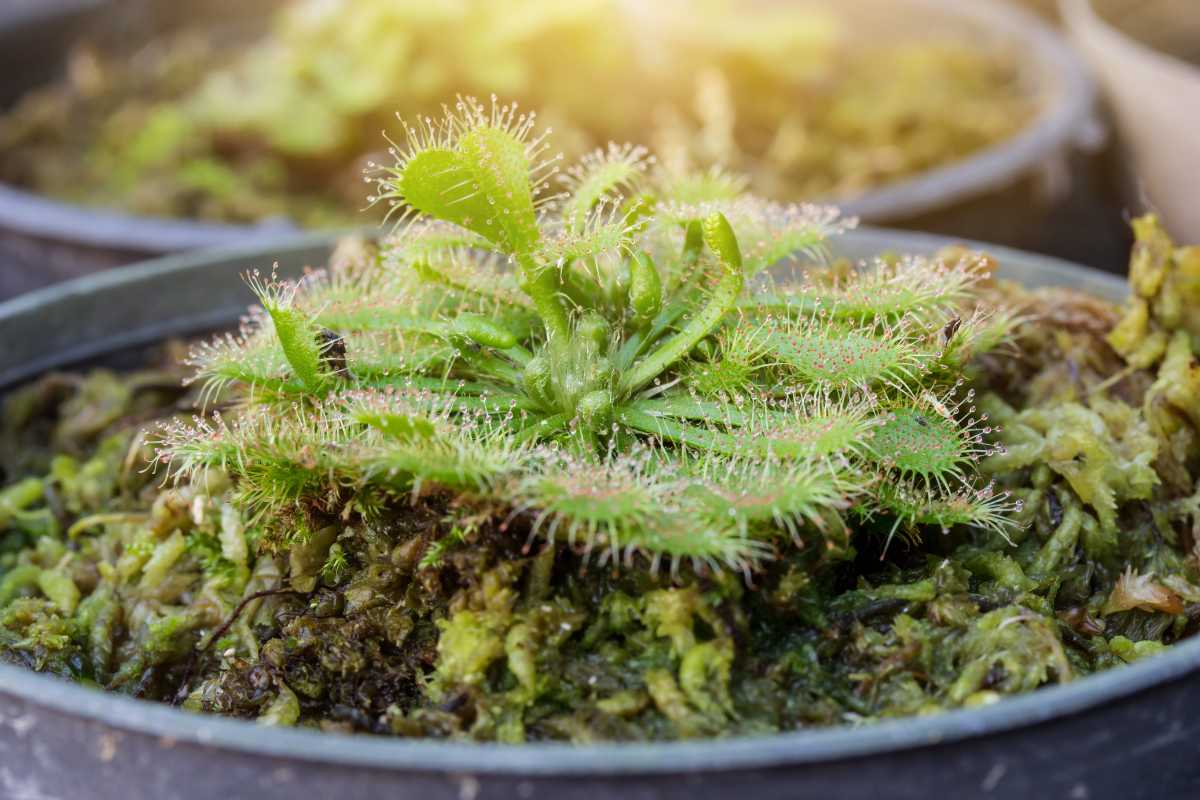
The round-leaved Sundew is a carnivorous plant that feeds on insects. It is native to bogs, fens, and mountains of North America and Europe.
This plant has round and sticky leaves with hair-like tentacles that trap and digest prey.
It is important to keep the Round-leaved Sundew plant in cool temperatures and damp environments with high humidity.
This plant should never be waterlogged, but always kept moist. It is also recommended to use rainwater or distilled water to avoid mineral buildup.
Since the leaves of this plant are delicate and can easily get sunburned, it needs to be positioned in a bright location, but away from direct sunlight.
You can also use a diluted mixture of liquid fertilizer during the growing season only since it doesn’t require much fertilizer.
Final Thoughts on Plants With Round Leaves
Looking for the perfect addition to your garden and indoor space? Then plants with round leaves will definitely work wonders for you!
No matter what needs and preferences you have for your plant collection, there’s a wide variety of species to choose from so there’s definitely a perfect plant for you!
Health benefits such as cleaner air, reduced stress levels, and increased productivity are some of what these round-leaved plants offer more than just their aesthetic value.
There is sure to be a round-leaved plant that will meet your need, regardless if you prefer large, leafy plants or small, compact ones!
Check out these articles to learn more about plants for your garden:




